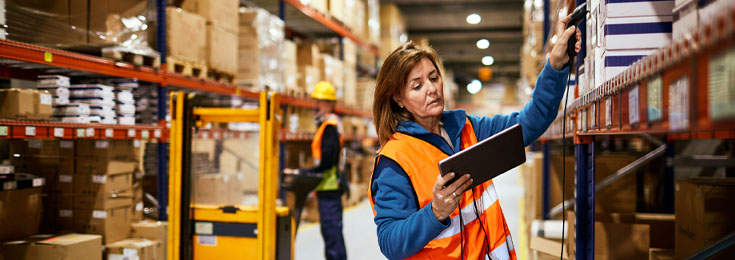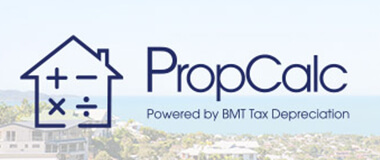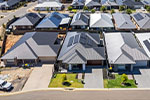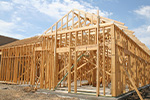The 'flight to quality' can fuel your depreciation deductions
2023 was a challenging year for the property industry. However, despite interest rate hikes, inflation and ongoing consumer uncertainty dominating the headlines, industrial commercial property has remained resilient. Much of this was driven by occupier demand boosting rents for prime and second grade industrial property generating stable cash-flow from tenants on long-term leases.

In recent years the 'flight to quality' has been a trend driving other commercial sectors, including the strained office and retail spaces. In this flight to quality, access to transport and sustainable features like waste management, water usage, and energy efficiency are a priority.
The benchmark in measuring a property’s sustainable features is the National Australian Built Environment Rating System (NABERS). Commercial property owners and managers are required to disclose this rating at the point of sale or lease, under the Building Energy Efficiency Disclosure (BEED) Act 2010.
In addition, the federal government released its draft exposure of the Mandatory Sustainability Reporting Framework in January 2024, inviting responses due later in the year. The consultations seek to introduce a standardised and internationally aligned framework for disclosing sustainability related risks and opportunities, requiring businesses to report on direct and indirect emissions in their value chain.
Though sustainability reporting is not yet mandatory, the conversation is on the table and the industrial property market will soon be following the flight to quality trend, prioritising sustainable features as a necessity rather than a luxury.
Reluctance from both landlords and tenants to bear the substantial costs of sustainable upgrades has hindered progress in commercial property in this area, but the implementation of a green lease framework can potentially align both parties to mutual sustainability objectives.
JLL investments define a green lease as an agreement between landlord and tenant that sets out environmental objectives on how the building is to be improved, managed and/or occupied in a sustainable manner.
According to the Australian Department of Climate Change and Energy Efficiency, a green lease agreement aims to ensure the sustainable construction, fit-out, usage and maintenance of a commercial property, as mutually agreed by landlord and tenant.
While mandatory sustainability reporting is still in the consultation phase, the flight to quality and the pursuit of higher rental rates from high-calibre, long-term tenants in the industrial space, may be a good enough reason to make these changes.
A green lease may be the vehicle to ensure a shared responsibility for the implementation of these changes. For most businesses using industrial spaces, the largest contributors to greenhouse gasses are water, heating and electricity consumption, which can easily be upgraded to meet sustainability standards that have become a central feature in the flight to quality.
Depreciation deductions are available for tenants and landlords when upgrading assets in their value chain ahead of the inevitable transition to more sustainable features. Below is an example of an industrial space of 1,000 sqm, with some examples of depreciation deductions available for both tenant and landlord.
Table 1: Deductions available to the landlord of a 1,000 sqm industrial space for sustainable upgrades
| Capital works (Div 43) |
Rate | Total cost | First full financial year | First 5 years cumulative |
| Foil board insulation | 2.5% | $121,600 | $3,040 | $15,200 |
| Plant & equipment (Div 40) |
Effective life | Total cost | First full financial year | First 5 years cumulative |
| Solar panels | 20 years | $90,250 | $9,025 | $36,958 |
Calculated using diminishing value method.
Table 2: Deductions available to the tenant of a 1,000 sqm industrial space for installing sustainable upgrades
| Plant & equipment (Div 40) |
Effective life | Total cost | First full financial year | First 5 years cumulative |
| Hot water unit | 15 years | $78,900 | $10,520 | $40,322 |
| LED lights | 5 years | $36,250 | $14,500 | $33,431 |
| Total | $25,020 | $73,753 | ||
Calculated using diminishing value method.
Since 1 July 2023, small and medium-sized businesses with a turnover under $50 million have benefitted from an additional twenty per cent deduction on eligible depreciating assets promoting energy efficiency and electrification.
Under this Small Business Energy Incentive, businesses could potentially claim up to $20,000 in bonus deductions, with a total expenditure cap of $100,000. This applies to both upgrading existing assets and acquiring new ones, provided they are first used or installed between July 1, 2023, and June 30, 2024.
With substantial depreciation deductions and Small Business Energy Incentives available for these sustainable upgrades, both landlords and tenants will benefit from making these changes. To ensure that all Division 40 and Division 43 works are accurately assessed, property investors and tenants should speak to a trusted accountant and a specialist quantity surveyor like BMT Tax Depreciation.



























